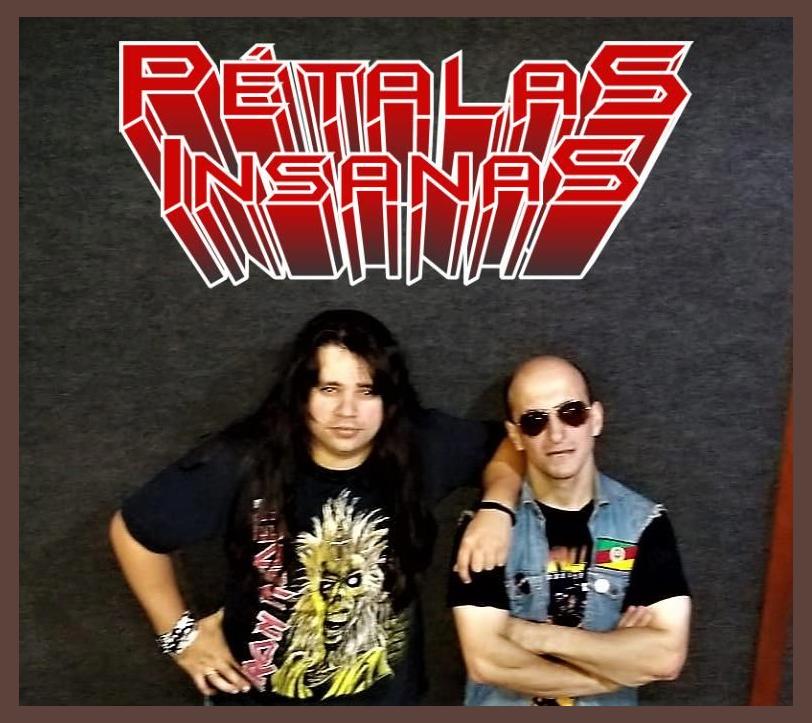 Pétalas Insanas
Pétalas Insanas
Pétalas Insanas: Unveiling the Controversial Legends of Brazilian Rock
Amidst the vibrant tapestry of Brazilian rock music, Pétalas Insanas emerged as an enigmatic and polarizing force. Their signature song, "Velha Estrada," became an anthem for a generation grappling with social and political turmoil.
Origins and Early Days:
Pétalas Insanas was formed in 1984 in the gritty streets of São Paulo. The band consisted of vocalist Marcos "Marcão" Valadão, guitarist Sérgio "Serginho" Lopes, bassist Luiz "Lúcio" Ribeiro, and drummer Eduardo "Gordo" Dutra. Their raw and rebellious sound, infused with punk and heavy metal influences, quickly resonated with disaffected youth.
Controversy and Censorship:
Pétalas Insanas' lyrics often pushed the boundaries of acceptability. Their songs tackled taboo subjects such as drug use, violence, and political oppression. This led to frequent clashes with censors and conservative critics. In 1986, their album "Cabeça" was banned due to its controversial cover art and lyrics.
Discography:
Despite the controversies, Pétalas Insanas released a string of influential albums:
* *Cabeça* (1986)
* *Velha Estrada* (1987)
* *Brasil Alternativo* (1988)
* *Tudo ao Mesmo Tempo Agora* (1990)
* *O Enigma* (1992)
Members:
* Marcos "Marcão" Valadão (vocals): The charismatic frontman with a raw and powerful voice.
* Sérgio "Serginho" Lopes (guitar): A virtuoso guitarist known for his intricate solos and haunting melodies.
* Luiz "Lúcio" Ribeiro (bass): A solid and thunderous bassist who anchored the band's sound.
* Eduardo "Gordo" Dutra (drums): A dynamic and innovative drummer who added a unique rhythmic dimension to the band's music.
Legacy:
Pétalas Insanas disbanded in 1993, but their legacy continues to inspire generations of Brazilian musicians. Their music remains a testament to the raw energy and rebellious spirit that defined the Brazilian rock scene of the 1980s. Despite the controversies and challenges they faced, Pétalas Insanas played a pivotal role in shaping the sound and message of Brazilian rock.
Amidst the vibrant tapestry of Brazilian rock music, Pétalas Insanas emerged as an enigmatic and polarizing force. Their signature song, "Velha Estrada," became an anthem for a generation grappling with social and political turmoil.
Origins and Early Days:
Pétalas Insanas was formed in 1984 in the gritty streets of São Paulo. The band consisted of vocalist Marcos "Marcão" Valadão, guitarist Sérgio "Serginho" Lopes, bassist Luiz "Lúcio" Ribeiro, and drummer Eduardo "Gordo" Dutra. Their raw and rebellious sound, infused with punk and heavy metal influences, quickly resonated with disaffected youth.
Controversy and Censorship:
Pétalas Insanas' lyrics often pushed the boundaries of acceptability. Their songs tackled taboo subjects such as drug use, violence, and political oppression. This led to frequent clashes with censors and conservative critics. In 1986, their album "Cabeça" was banned due to its controversial cover art and lyrics.
Discography:
Despite the controversies, Pétalas Insanas released a string of influential albums:
* *Cabeça* (1986)
* *Velha Estrada* (1987)
* *Brasil Alternativo* (1988)
* *Tudo ao Mesmo Tempo Agora* (1990)
* *O Enigma* (1992)
Members:
* Marcos "Marcão" Valadão (vocals): The charismatic frontman with a raw and powerful voice.
* Sérgio "Serginho" Lopes (guitar): A virtuoso guitarist known for his intricate solos and haunting melodies.
* Luiz "Lúcio" Ribeiro (bass): A solid and thunderous bassist who anchored the band's sound.
* Eduardo "Gordo" Dutra (drums): A dynamic and innovative drummer who added a unique rhythmic dimension to the band's music.
Legacy:
Pétalas Insanas disbanded in 1993, but their legacy continues to inspire generations of Brazilian musicians. Their music remains a testament to the raw energy and rebellious spirit that defined the Brazilian rock scene of the 1980s. Despite the controversies and challenges they faced, Pétalas Insanas played a pivotal role in shaping the sound and message of Brazilian rock.